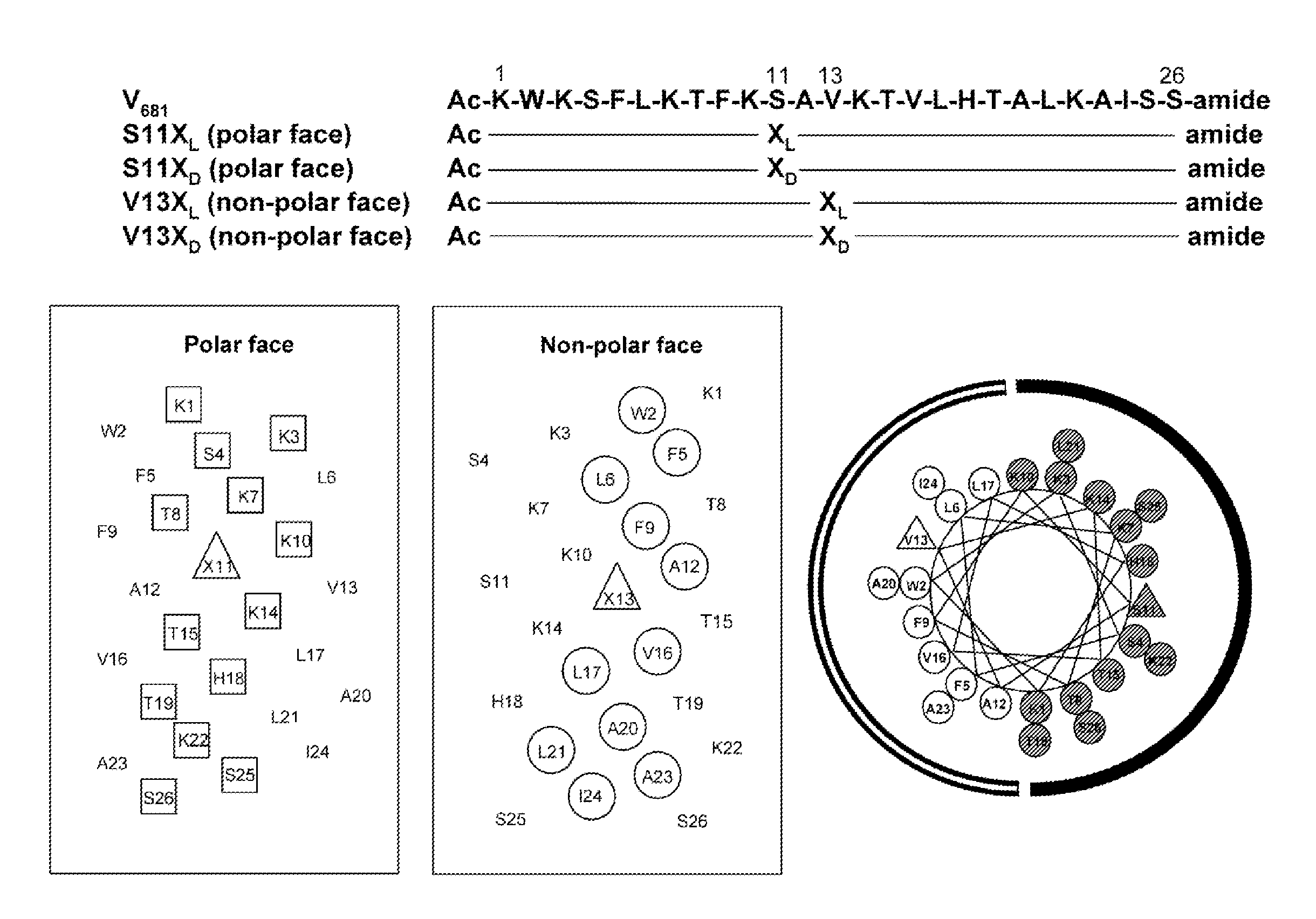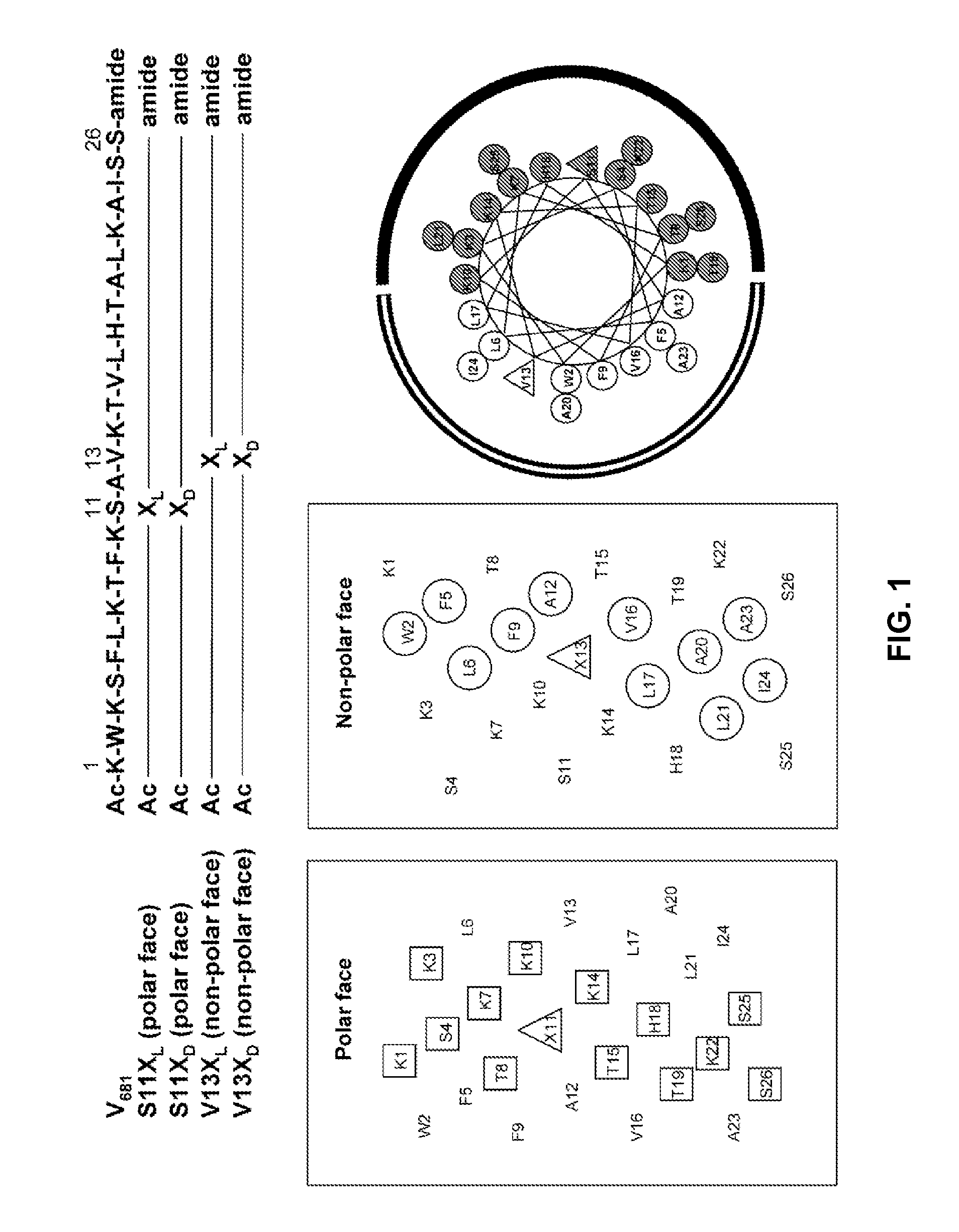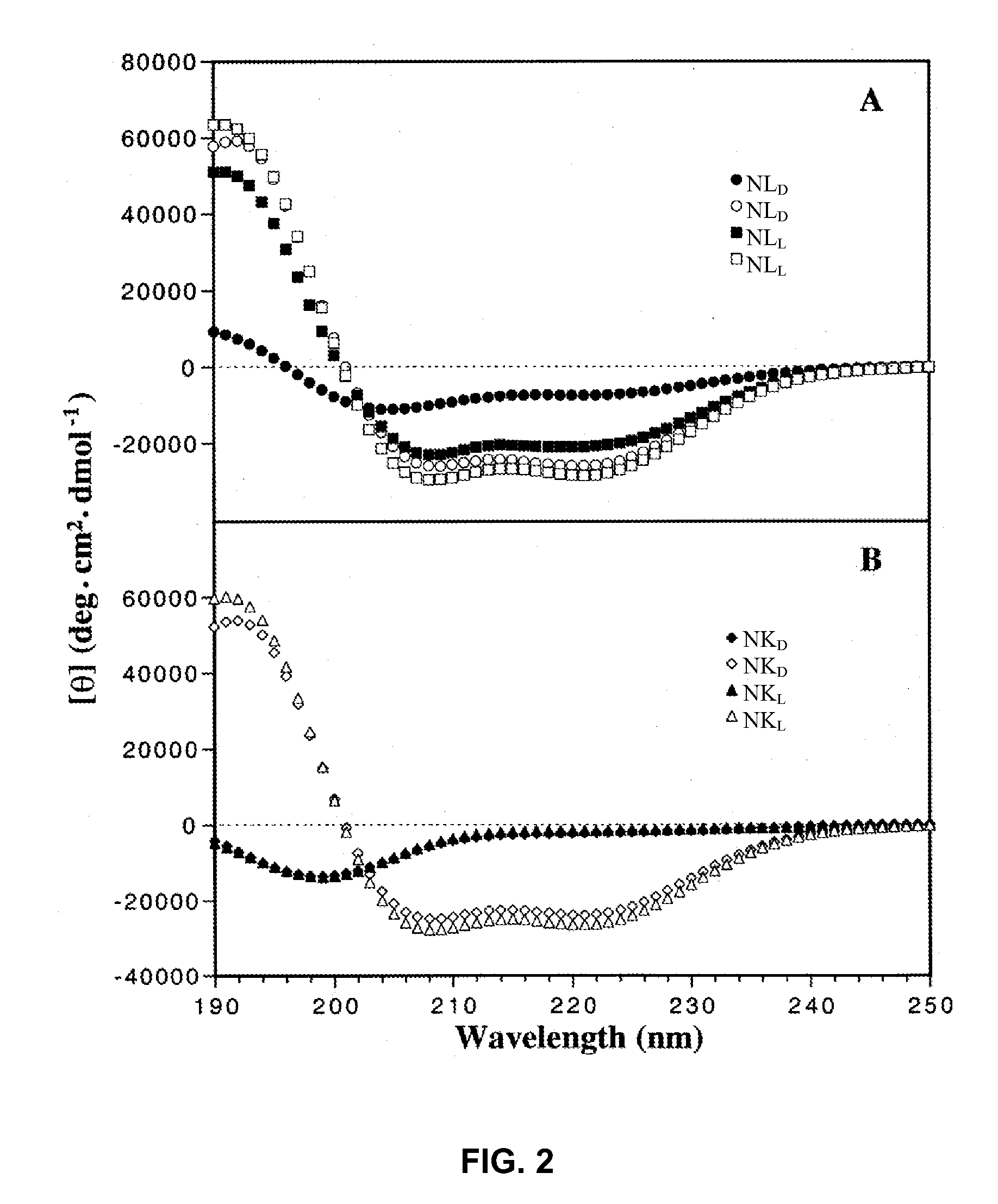Antimicrobial Peptides and Methods of Use
a technology of antimicrobial peptides and peptides, which is applied in the direction of antibacterial agents, peptide/protein ingredients, drug compositions, etc., can solve the problems of greater peptide self-association in solution, the toxicity or ability of antimicrobial peptides as antibiotics, and the inability to lyse eukaryotic cells, so as to improve the state of patient or animal, and the effect of lessening the detrimental effect of diseas
- Summary
- Abstract
- Description
- Claims
- Application Information
AI Technical Summary
Benefits of technology
Problems solved by technology
Method used
Image
Examples
example 1
Derivatives of Peptide V681 with Modified Activity
[0071]In the studies described hereinafter, the 26-residue peptide having the sequence Ac-KWKSFLKTFKS-AVKTVLHTALKAISS-amide (V681, SEQ ID NO:1) was utilized as the framework to study the effects of peptide hydrophobicity / hydrophilicity, amphipathicity and helicity by one or more amino acid substitutions in the center of the polar and nonpolar faces of the amphipathic helix on biological activities. These studies demonstrate i) the importance of the peptide self-association parameter in the de novo design of amphipathic α-helical antimicrobial peptides; ii) that disruption of α-helical structure in benign conditions by D-amino acid substitutions or substitutions of hydrophilic / charged L-amino acids on the non-polar face can dramatically alter specificity; and iii) that these substitutions enhance antimicrobial activity, decrease toxicity and improve antimicrobial specificity while maintaining broad spectrum activity for gram-negative ...
example 2
Peptide Analogs with Varied Position of Substitution
[0137]Further peptides of the invention are generated by varying the position of a substitution. By denoting the center position as “i”, varied positions of substitutions can be generated while retaining a preferred location on the desired face, e.g. the non-polar face. In the relative context of SEQ ID NO:1, for example, the position for substitution is selected from the group consisting of i, i−4, i−8, i+4, and i+8. See FIG. 7A for examples of specific variants achieved by optional positioning of substitutions. Without wishing to be bound by a particular theory, it is hypothesized that a peptide with the substitution at position i of KL (e.g., in SEQ ID NO:6), in the center position of the non-polar face, can have greater biological activity than a peptide with a substitution at a position further away from the center position. According to such theory, the therapeutic index can decrease in the order of KL13>KL9>KL5 (here the num...
example 3
Peptide Analogs with Varied Nature of Charge Substitution
[0144]Further peptides of the invention are generated by varying the nature of the charged residue selected for the substitution. In the relative context of SEQ ID NO:1, for example, the position for substitution is established as position 13. The amino acid selected for substitution is preferably a charged amino acid and is in particular an amino acid with a net positive charge. Particular examples of charged residues at position 13 are Lys, Arg, Orn, His, diamino butyric acid and diamino propionic acid. We note that Orn has a delta / 6-amino group instead of an epsilon / ε-amino group in Lys, i.e., the side-chain is shorter by one carbon atom; diaminobutanoic acid is one carbon shorter than Orn; i.e., it has a gamma / γ-amino group; diaminopropionic acid is two carbons shorter than Orn, i.e., it has a beta / 1-amino group.
[0145]See FIG. 7A for a specific variant peptide achieved by optional selection of charged residues for use in s...
PUM
| Property | Measurement | Unit |
|---|---|---|
| pH | aaaaa | aaaaa |
| pH | aaaaa | aaaaa |
| pH | aaaaa | aaaaa |
Abstract
Description
Claims
Application Information
 Login to View More
Login to View More - R&D
- Intellectual Property
- Life Sciences
- Materials
- Tech Scout
- Unparalleled Data Quality
- Higher Quality Content
- 60% Fewer Hallucinations
Browse by: Latest US Patents, China's latest patents, Technical Efficacy Thesaurus, Application Domain, Technology Topic, Popular Technical Reports.
© 2025 PatSnap. All rights reserved.Legal|Privacy policy|Modern Slavery Act Transparency Statement|Sitemap|About US| Contact US: help@patsnap.com



